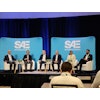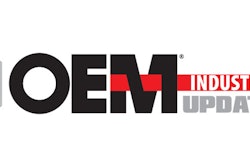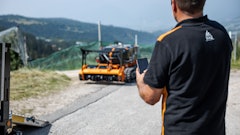
Each year, our State of the Industry issue looks at the top trends and technologies within the heavy equipment industries. We also dig into current and future market conditions, as well as regulations which may currently or in the coming years have an impact on how the industry will go about designing its equipment.
To get the best insights, we speak with executives from a variety of companies working in the industry—everyone from associations, to OEMs to component suppliers. Below are responses provided by Chad Repp – Business Development Manager – CANect Telematics, Russ Farrell – Applications Engineering Manager, and Tom Szewczyk – VP of Operations, HED Inc.
Read all of this year's executive Q&As.
Supply Chain Disruptions
How have supply chain disruptions impacted your business over the past year?
Szewczyk: The supply chain disruptions have impacted our business this year in many ways. It has impacted first and foremost how we communicate with our customers. We are working with them to get longer forecasts, larger blanket orders and in general more visibility into their future business. Internally our business has had to be nimble and be able to react to the ever-changing supply of material. When hard to get material becomes available, we must be prepared to react and get that material into our product and out to our customer as quick as possible because they are in dire need of it. Lastly, it has impacted the amount and how we communicate with our supply chain. We have daily meetings set up with our key suppliers with action registers we review to stay on top of the ever-changing landscape of the material flow. This constant contact and action registers holds everyone accountable and has been a valuable tool that has helped HED be successful in keeping our customers up and running during these trying times.
At what point do you foresee the current supply chain disruptions becoming less of an issue?
Szewczyk: From all of the feedback we are getting from the supply chain and everything we have read we believe the impact will begin to lessen in the second quarter of 2022. The one item that we are struggling to get information on is the labor shortage. Every one of our suppliers is struggling to get qualified candidates that want to stay working long-term.  Tom Szewczyk
Tom Szewczyk
What industry challenges have these supply chain disruptions brought to light, and what can the industry as a whole do to overcome them?
Szewczyk: These industry challenges have brought to light that the global market for electronics is fragile and that many things including weather can have an impact on material availability to meet the demand. It has also brought to light that many companies historically haven't done a great job specifying multiple sources for active components so when there is a shortage you can have more options to obtain supply. The industry as a whole can and should, through this crisis, get better at longer range planning to reduce vulnerability and bring more stability to the electronics market.
Data, IoT & Connectivity
What will be the best use cases for the Internet of Things (IoT) and data in the coming years?
Repp: Until recently we’ve seen a focus on vehicle monitoring (location, state, failures, etc.) as the primary focus of IoT, which has provided very valuable insights to how the machine is being used and maintained. This focus has helped many decrease the cost of ownership. In the coming years monitoring will continue to evolve for further savings, but we'll also see the scope of IoT solutions to include the operator and surround equipment. An example of this is Operator Access, where only certified operators can utilize the vehicle and subsequently their operations are monitored, and if too many unsafe operations are performed action can be taken to improve the operators use.
What advancements do you see on the horizon for connectivity and machine learning in the next decade?
Repp: Connectivity is an interesting topic as we hear about it at every advertising turn. While 5G speeds will help with high data volume solutions (i.e. multi-video streaming) the real value will come with decreased latency which will help with the real time communications necessary to support virtual operations. While connectivity is required for any/all IoT solutions, it does come at cost which will continue to grow with the amount of data transmitted. This is where machine learning and edge computing comes in. We’ll see more automating actions like operator assisted movements (or corrections) ensuring safe operation, vehicle scheduling services or parts ordering without human action, and ultimately leading to fully autonomous operations.
What challenges remain for the continued adoption of data, IoT and connectivity related technologies or systems?
Repp: Like any new technology, there are challenges especially being that IoT is not built for one function or even one person. IoT benefits everyone (OEMs, dealers, rental groups and owners/operators) within the vehicle value chain and each of them sees value within the data in different ways. This makes requirements definition and cost justification challenging when designing and implementing your IoT solution. To overt this challenge a "sum of many" (features, stakeholders, etc.) mindset is required to maximize the impact of an IoT solution, while an evolutionary or staged deployment mindset is necessary so that value can start immediately while growing into an IoT solution that will deliver value to ALL involved.
Automation & Smart Systems
How has automation helped the heavy vehicle and equipment industries become more productive?
Farrell: Full vehicle automation is still in the early stages of development and adoption. However, we are starting to see the proliferation of semi-autonomous functions. These functions allow the operators’ repetitive tasks to be repeated at the push of a button, saving time and more importantly, improving accuracy and speed.
How has the development and use of smart systems evolved, and what further impacts will they have on the industry?
Farrell: Automation and predictive analytics. Vehicles will continue along the path towards full automation and at the same time provide more information so that maintenance and downtime can be scheduled instead of happening during the job.  Russ Farrell
Russ Farrell
What role will telematics continue to play in the heavy vehicle and equipment industry?
Farrell: To date a lot of the telematics offerings have focused on improving the design (collecting data for the OEM) or basic fleet management. Operator productivity and safety monitoring will be the next wave—making things more efficient and safer.




















